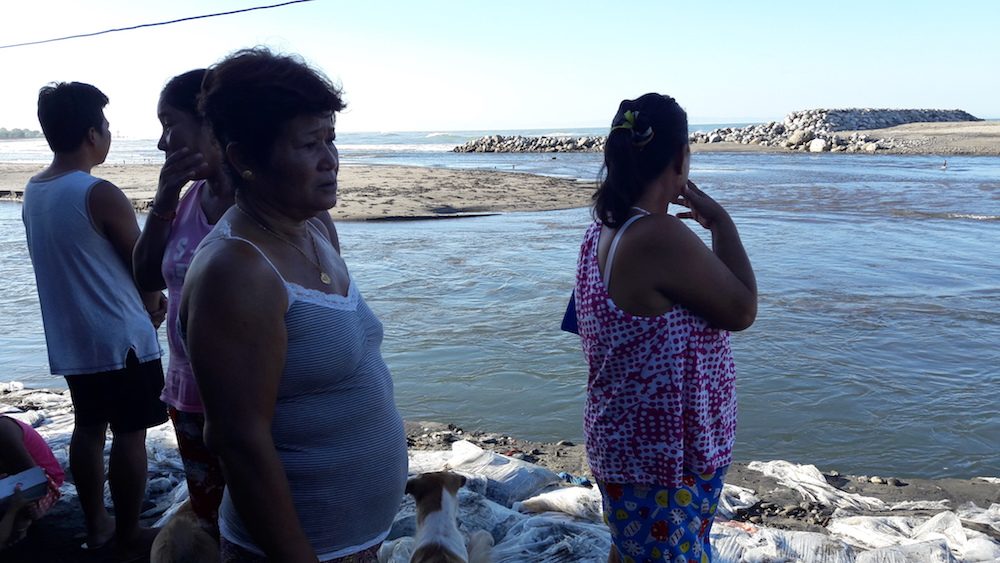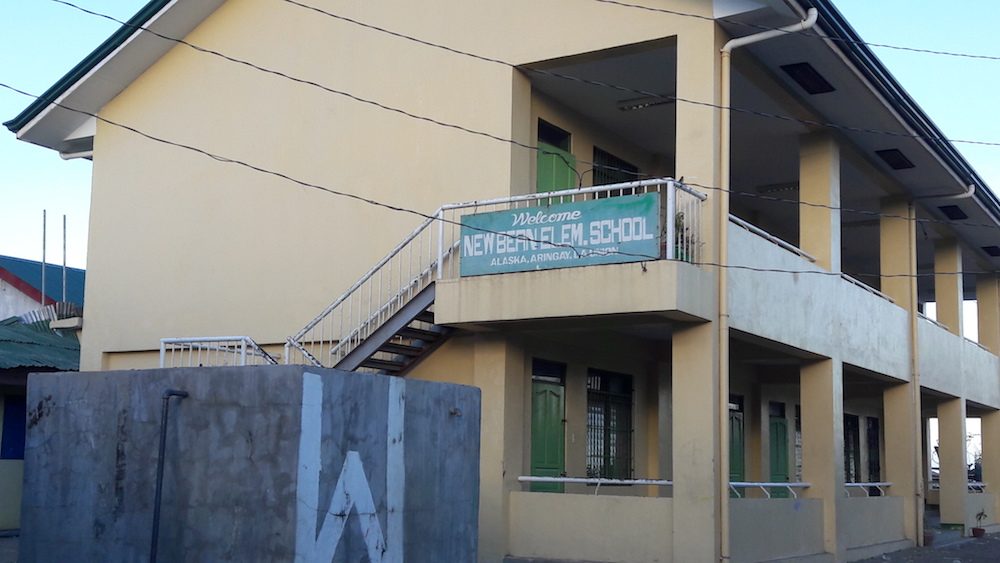SUMMARY
This is AI generated summarization, which may have errors. For context, always refer to the full article.

MANILA, Philippines – Barangay Alaska is a coastal village in Aringay, La Union, a bucolic second-class municipality 244 kilometres north of Manila. In this village, 306 families are making their last stand against the encroaching sea.
As of 2010, Alaska had a land area of 237 hectares in its lone community called Sitio Berlin. In the 90s, there used to be two sitios in the area, but Sitio Nagpanauan totally sunk when sea level rose and the land caved in during the July 16, 1990 earthquake that devastated north Luzon.
Since then, residents observed that the sea had continued to rise and eat away their shoreline.
School teacher Leticia Ferrer, 42, still remembers where the last 4 school buildings in Alaska once stood. Crashing waves destroyed 3 of the school buildings, while the ocean completely submerged the fourth one. “This is the fifth time we’ve moved the school,” the Grade 6 teacher said in vernacular. “If you swim towards that part of the ocean, you will see the old school building underwater,” she said.
But the shoreline around the new Newbern Elementary School, where 158 students attend, is also receding, observed residents. “I fear the sea will engulf this school building, too,” Ferrer said.
Long-time Alaska resident Editha Rulloda, 59, bears the same worry in her eyes. She points to the water less than a meter away from the sand bags that surround her home. “We have nowhere else to go,” she said.
Houses in Alaska are built with lightweight materials: Pieces of cardboards, tin sheets, and tarpaulin patched together, mostly salvaged from their previous homes. Barangay captain Jose Rulloda said the people want to permanently relocate to a safe place where there is livelihood. “Who’s going to help us?”
Climate change a factor in sinking Alaska
In 2011, the Marine Geological Survey Division (MGS) of the Mines and Geosciences Bureau (MGB) surveyed La Union’s shoreline for coastal geohazards. They found out that the province’s coastal barangays, including Barangay Alaska, are naturally prone to coastal erosion, storm surge, tsunami and coastal flooding.
They also identified that liquefaction, a phenomenon in which soil loses its strength in the presence of a stress, usually earthquake, as the cause for Sitio Nagpanauan to liquefy and submerge after the 1990 tremor.
MGS OIC-chief Dr. Yolanda Aguilar said in an interview that because the coastal areas of La Union, including Aringay and Agoo, are generally underlain by loose sand, they are easily reclaimed by wave attacks during stormy and habagat seasons.

But apart from natural causes of shoreline retreat, Aguilar said that human-induced climate change is warming ocean temperature and causing rising sea levels.
“With global warming, sea level rise is enhancing coastal erosion not only in Aringay but in all the coastal areas of the Philippines,” Aguilar warned.
A 2015 study published by the University of the Philippines reinforces this finding. The study projected that more than 167,000 hectares of coastland – about 0.6% of the Philippines’ total area – will go underwater especially in low-lying island communities.
Citing data from the World Meteorological Organisation (WMO), it showed that water levels around the Philippines are rising at a rate almost three times the global average due partly to the influence of the trade winds pushing ocean currents.
On average, sea levels around the world rise 3.1 centimeters every 10 years. Water levels in the Philippines are projected to rise between 7.6 and 10.2 centimeters each decade, the study said.
Loss and damage: Making polluters pay
Sinking Barangay Alaska depicts a scenario that is occurring in coastal communities in many parts of the world where rising sea levels are forcing poor people to migrate.
Thus, the need for loss and damage funding to help vulnerable coastal communities was expected to be highlighted in the last COP.
Julie-Anne Richards, a UK-based campaigner for and author of the Climate Damages Tax, a ground-breaking concept seeking to make rich countries and the fossil fuel industry pay for climate damage to poor and vulnerable communities, explained that loss and damage is the third pillar of climate change finance, added to mitigation and adaptation.
Loss and damage funding comes in when both mitigation and adaptation have failed to help communities deal with climate impacts, explained Richards.
“The climate change that we are experiencing now is a result of the historical emissions of rich countries,” she argued.
Richards said that the fossil fuel industry is also to be held responsible because it is the source of roughly 70% of CO2 emissions in the atmosphere.
“Oil, coal and gas companies that extract fossil fuels from the ground sell it for trillions of dollars of profits a year, and essentially outsource the true cost of their products onto the poor people who face climate change loss and damage,” she said.
Rich countries guilty of ‘cruel double standard’
Considering the climate change-related loss and damage have occurred over the past years, there is a need to raise US $200 to $300 billion a year in loss and damage funding, Richards said.
Rich countries and fossil fuel companies should not be as scared as they are about this, Richards said, proposing to source this funding from airline tax for international flights, taxes for international aviation and maritime fuel, and taxes for high volume financial transactions instead of national budgets.
But at COP23, rich countries like Australia and EU rejected the proposal to include financing in loss and damage negotiations because “not every disaster is caused by climate change.”
Greenpeace Southeast Asia executive director Yeb Saño rebuked this position. While it is true that not all disasters are caused by climate change, extreme weather and slow-onset events such as sea level rise and ocean acidification can be clearly attributed to climate change, he said.
“Logic follows that if certain events can be attributed to climate change, then finance should be very much part of the conversation. Otherwise, they are guilty of a cruel double-standard,” Saño said.
He further argued that human-induced climate change does not have to be the singular cause for disaster for any loss and damage discussions to apply.
“The science of attribution now has the capability to calculate which part of an extreme event can be attributed to climate change,” Saño said.
“Rich countries promised to pay loss and damage finance in 2013 when they set up the Warsaw International Mechanism (WIM) for loss and damage, in the Paris Agreement in 2015, and again in Marrakesh in 2016. We have to make sure they keep their promise so that people in the frontlines of climate change will get the money they need to deal with the worst impacts,” Richards said. – Rappler.com
Ping Manongdo is a correspondent for Eco-Business, a Singapore-based sustainability-focused news organization. She was also a 2017 Southeast Asia Fellow for ClimateTracker, the biggest international network of climate journalists.
Add a comment
How does this make you feel?
There are no comments yet. Add your comment to start the conversation.